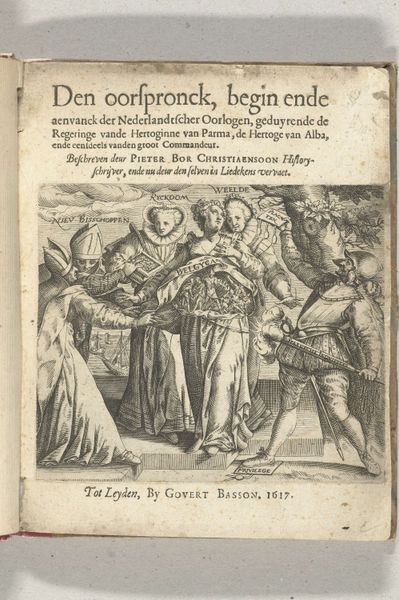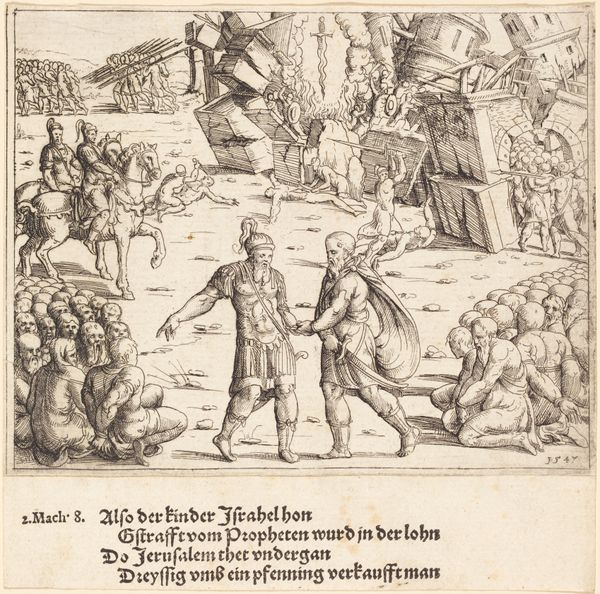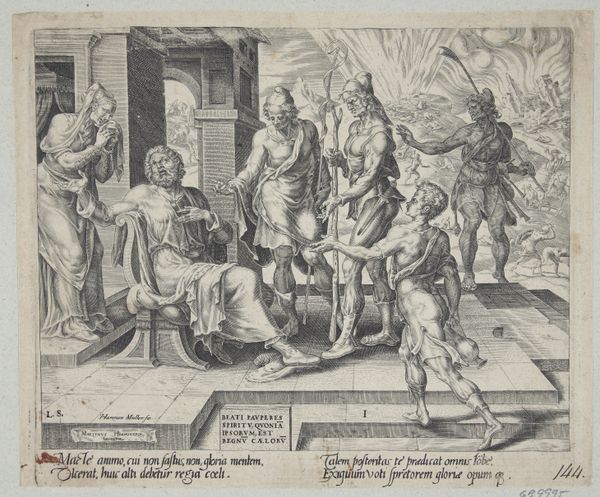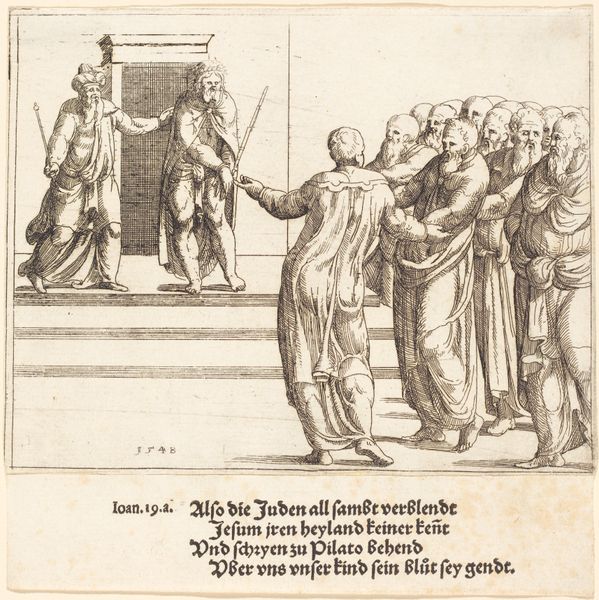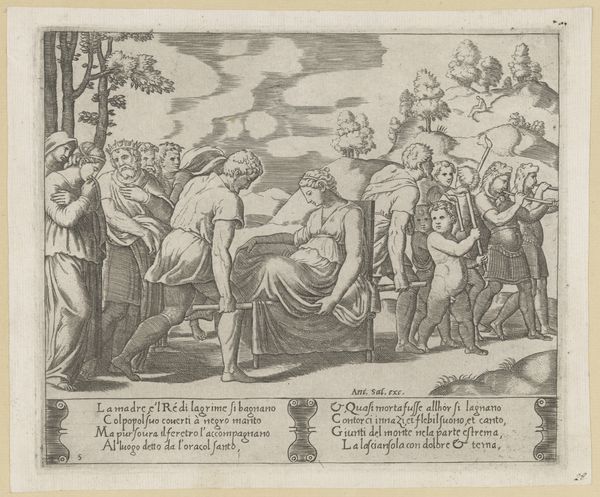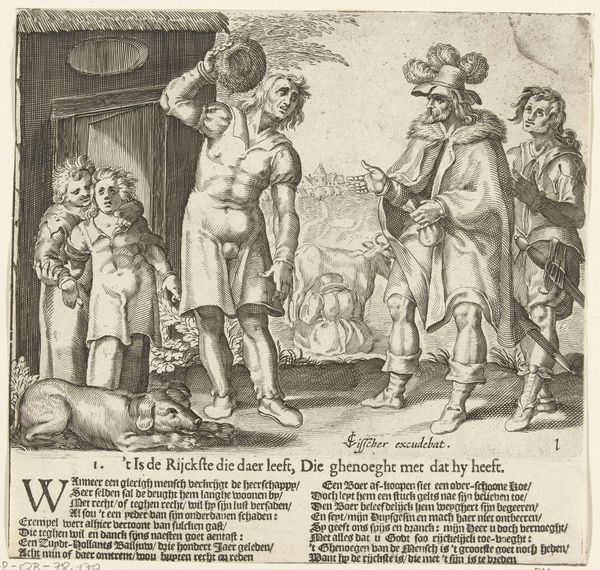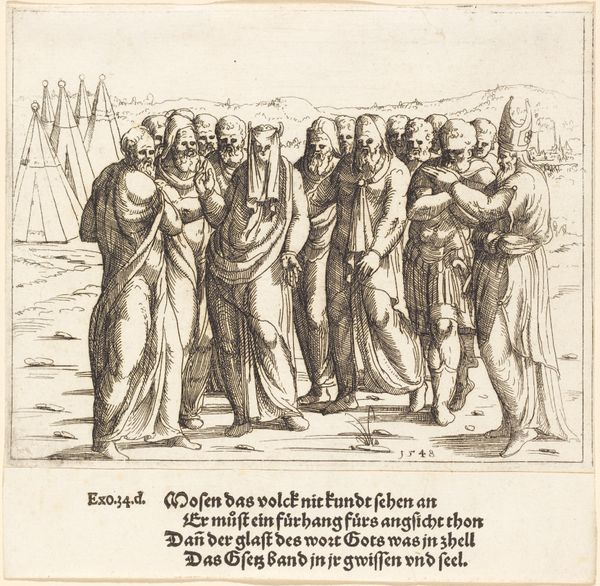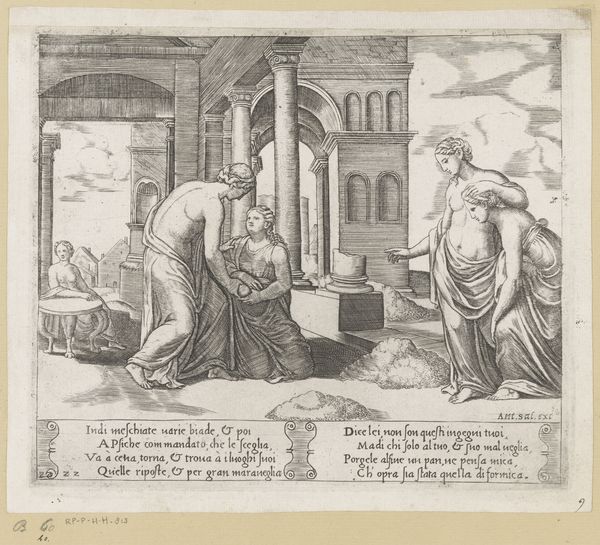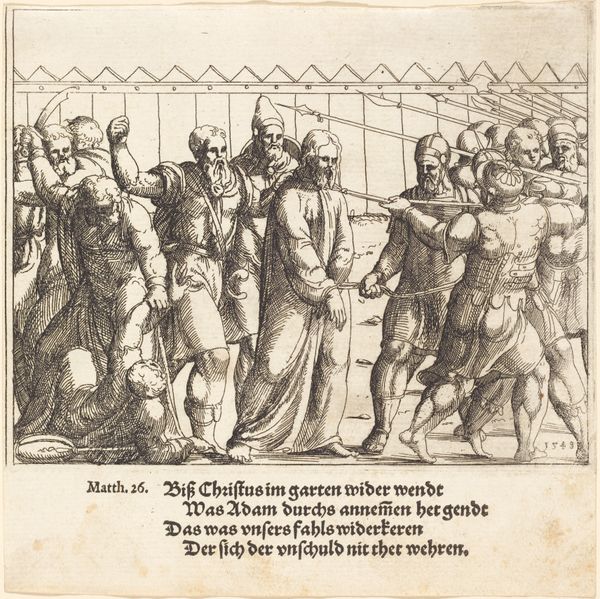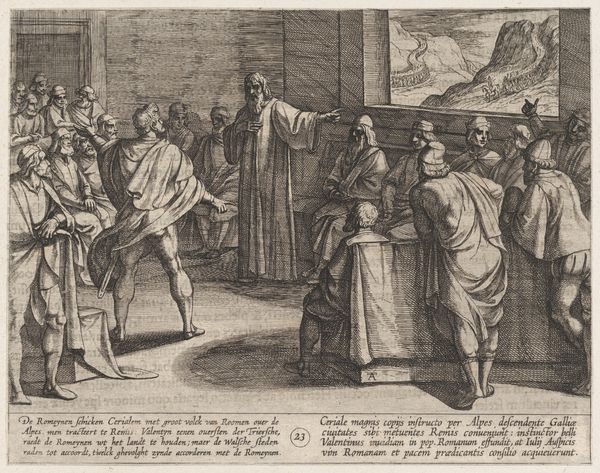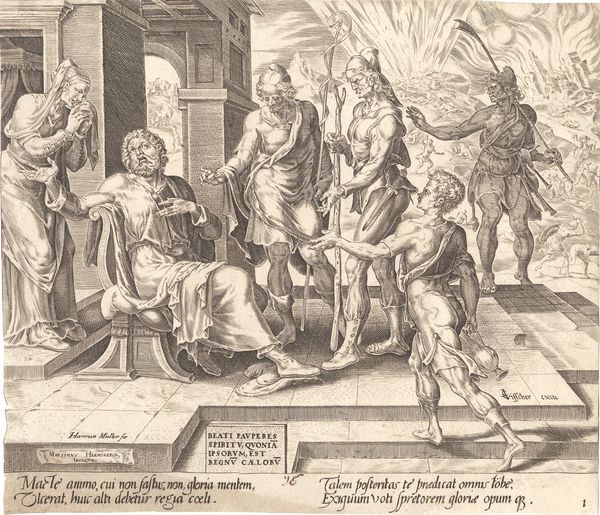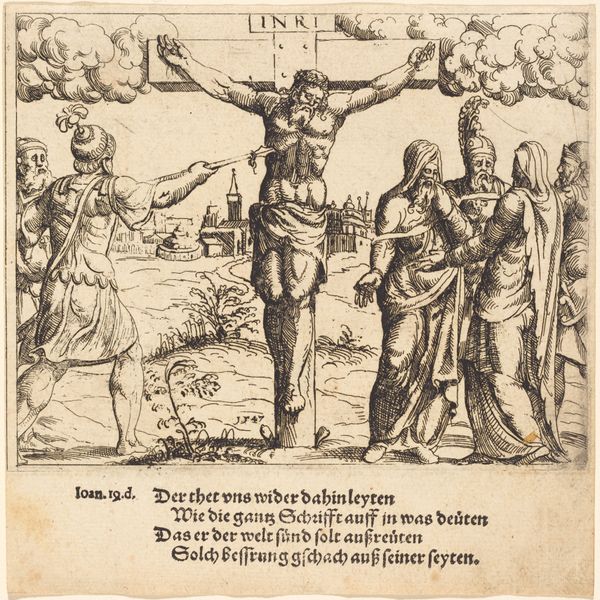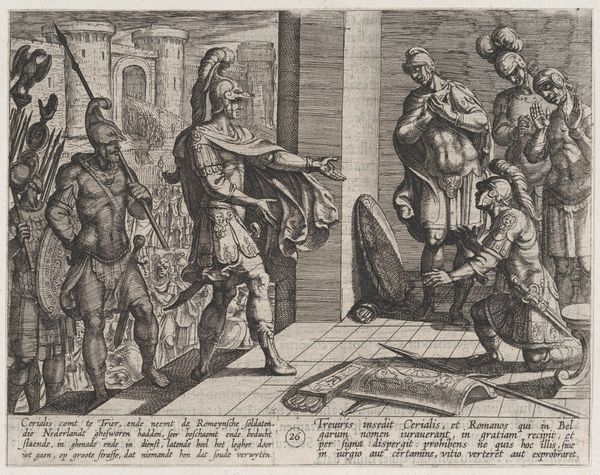
print, engraving
#
narrative-art
# print
#
figuration
#
history-painting
#
northern-renaissance
#
engraving
Copyright: National Gallery of Art: CC0 1.0
Editor: This engraving, "Christ before Caiaphas, and Peter Denying Christ," made by Augustin Hirschvogel in 1548, presents two scenes side-by-side. The stark contrast in emotional tone is really striking. In the left panel we have authority and accusations, and in the right we have vulnerability and fear. What symbols or deeper meanings do you think Hirschvogel is trying to communicate to his viewers? Curator: Consider how the image operates in the cultural memory. Hirschvogel taps into well-known biblical narratives, but he presents them within a Northern Renaissance visual language. Think about the use of fire – it not only provides warmth, but also a sense of imminent danger. And notice the rooster above – the potent symbol of betrayal – silently watching Peter from within the structure itself, almost trapped within its significance. Do you see how these symbols create an emotionally-laden reading experience for viewers familiar with Christian narratives? Editor: That’s interesting. The rooster seems like such a blatant foreshadowing of what’s to come; a clear symbolic reference! Why do you think artists like Hirschvogel would use symbols in such explicit ways? Curator: These symbols are far more than surface decorations; they carry the weight of cultural history. Remember that many viewers would have been familiar with the bible stories but couldn't read. So, the visual imagery – that complex interaction between figure, object, and composition– becomes essential for communicating and reinforcing spiritual lessons. Editor: So it’s about conveying those complex emotions of fear, doubt and, ultimately, faith through universally-understood visuals? Curator: Precisely. And how the denial of Christ becomes a complex, all too human moment, filled with deep psychological impact, then and now. Look how Peter hangs his head: shame transcends time and place, does it not? Editor: It definitely does. It’s amazing how just a few carefully placed symbols and expressions can convey so much emotional and narrative information, even after all these centuries!
Comments
No comments
Be the first to comment and join the conversation on the ultimate creative platform.
